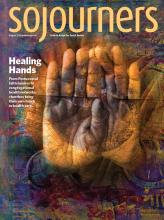THE EXPERIMENTAL psychologist Steven Pinker writes that what we think we have seen will shape what we expect to occur. It doesn’t make the news when people die peacefully in their sleep, or make love, or go for a walk in the countryside, but these things happen far more often—are much more the substance of life—than the acts of terror that preoccupy the media. It was horrifying when a British soldier was killed on an English street in May. But given the ensuing ethnic tension and communal judgment, it might have been useful, not merely accurate, to report that on the same day, almost 3 million British Muslims didn’t kill anyone. Because violence is a pre-emptive act (I kill you because you might kill me), when we keep telling the story that the threat of massive violence is ever-present, we will behave more violently.
According to Richard Rohr, the best criticism of the bad is the practice of the better. So perhaps attention to beauty is the best alternative to our cultural obsession with blood. For me, cinema can do this better than any other art form, and is uniquely capable of transporting the imagination. Recently I’ve traveled to the minds of retired Israeli security service leaders agonizing over their achievements and failures in The Gatekeepers, gone to Louisiana for a trip around the soul of a man trying to redeem himself in Mud, empathized with the tragic story of a man making bad choices to get into a better state in The Place Beyond the Pines, wondered at the creative process and bathed in the French countryside in Renoir, been reminded of and elevated into an imagining of love and its challenges in To the Wonder, and been provoked in Room 237 to consider whether or not Stanley Kubrick intended The Shining to be a lament for the genocide that built America.
Read the Full Article
